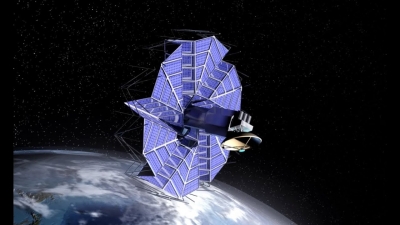
Origami was on display at the Tokyo Olympics, which concluded on August 8. Athletes and journalists across venues were reportedly given cranes, flowers, butterflies made of paper, as a token of good health and cheer amid the gloomy reality of the COVID-19 pandemic. But did you know that this art of paper folding is even used in space engineering?
Origami engineering
It was American physicist Robert J Lang, who first studied the mathematics of origami and came up with real-world applications of origami to engineering problems. Today, origami is providing practical solutions to tackle complicated problems in space engineering.
Wondering how it is possible? Well, the ancient Japanese art of origami is adopted in space engineering to fold large objects and compress them so that they fit into smaller spaces inside the rocket and can be deployed once they reach their destination.
For instance, origami has helped NASA in designing the Starshade, a flower-shaped occulter in the Exoplanet Exploration Program in the New Worlds Mission Origami helped NASA fit the Starshade occulter, which is the size of a baseball field, inside a rocket. Once the Starshade opens in space, it will allow a space telescope to better see the planets around bright stars. Similarly, origami has been used in the CubeSats project where a huge antenna was packed into satellites the size of a briefcase. Origami has also been used in designing a robot called PUFFER. Applying the principles of origami, the scientists have been able to create a robot that can fold itself up and operate in small spaces. The robot will be able to enter cracks, crevices and explore all the areas that are otherwise inaccessible.
See how the simple art of paper folding is blended with rocket science.
Evolution of origami
Japan’s love affair with paper began when the Buddhist monks imported the technology for manufacturing paper from China via Korea and created the beautiful washi paper, which is used in origami.
Origami butterflies, Ocho and Mecho, are the earliest known examples of origami mentioned in a short poem composed by thara Saikaku in 1680. Then in 1764 Sadatake Ise published the first set of instructions on paper folding in “Tsutsumi musibi no Ki”. It developed further in the Edo era. Paper adomments were folded in different ways to symbolise different things. By the end of the period, more than 70 shapes were known including the crane, frog and samurai helmet.
Meanwhile, countries around the world too had their own traditions of folding. The Spanish tradition of folding paper birds was known as ‘pajarita’, whereas folding of napkins had become a practice among Italy’s elites too. The Japanese and the Western folding traditions were merged by a German educator, Friedrich Frobel, who created the concept of kindergarten. Frobel made paper folding a part of the early years curriculum, thereby drawing the world’s attention to this unique art.
Picture Credit : Google




